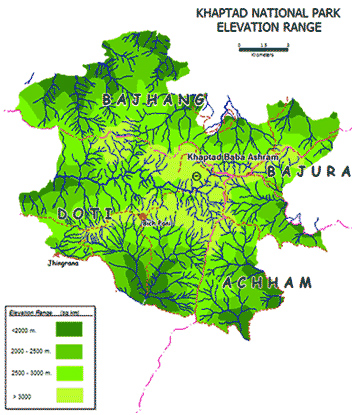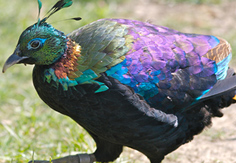- Home |
- Why With Us |
- About Us |
- Booking |
- Contact Us |
- Site Map
- Home
-
Nepal
-
Trekking
- Arun Valley with Gokyo Lakes
- Everest Base Camp Trek
- Everest- A Living Culture Exploration
- Everest Explore
- Everest Base Camp (via Thame) Trek
- Everest Base Camp with Kala Patthar
- Everest Comfort Trek
- Everest High Passes with Ama Dablam Base Camp
- Everest Mani Rimdu Festival Trek
- Everest Nagpa La Trek
- Everest with three high passes
- Gokyo Ri, Chola Pass & Chukung Ri with Kala Patthar
- Gokyo with Everest Base Camp
- Jomsom - Muktinath
- Jomsom - Muktinath
- Khayar Lake Trek
- Manaslu and Tsum Valley with Larkya La
- Upper Mustang Trek
- Manaslu High Circuit
- Manaslu, Tilicho Pass & Upper Mustang
- Annapurna Base Camp Trek
- The Annapurna Circuit Trek
- Annapurna Panorama
- Nar and Phu Valley Trekking
- Nepal Rhododendron Trek
- Royal Trek
- Saribung Trek and Expedition
- Annapurna Sanctuary Trek
- The Annapurna Sunrise Trek
- Expedition
-
Rafting
-
Peak Climbing
-
Tours
- Kathmandu-Chitwan-Jungle Tour with visit to Pokhara
- Dawn to Dusk Tour
- Historical, Natural & Cultural Tour with Camping
- Kathmandu Valley Temple Tour
- Temple - Panorama - Jungle Tour
- Taste of Nepal
- Central Nepal Tour
- Explore Nepal Tour & Trek
- Nepal Cross-country Tour
- Best of Nepal Tour & Treks
- Kathmandu valley rim Tour & Treks
- Nepal Culture Tour
- Introduction to Nepal Tour & Treks
- Nepal at a glance Tour & Treks
- Wonders of Nepal Tour & Treks
- Glimpses of Nepal Tour & Treks
- Through the Silhouette Tour & Treks
- Tent and Temple Tour
- Kathmandu-Chitwan-Pokhara Tour
- Historical, Cultural City and Jungle Tour
- Nepal Wildlife Tour
- Nepal Panorama Historical Tour
- Nepal Adventure Tour
- Nepal Pilgrimage Tour
- Ghalegaun-Ghanapokhara Homestay Tour
- Jungle Safari
- Adventure Sports
-
Trekking
- Tibet
-
Bhutan
-
India
- Yoga Tour
- About Us
-
The Great Himalayan Trail
-
Short Tours/Treks

Khaptad National Park
Named after Khaptad Swami, a renowned scholar and ascetic who lived here for almost five decades in the mid 1900's, Khaptad National Park is located in the far western region of Nepal and covers an area of 225 sq km. The park has a unique ecosystem  that is a combination of subtropical and temperate climate. To the north of the park is the Saipal Himal mountain range and to the south the rolling hills of the Mahabharat. 256 bird species of which 175 are residential, 135 species of flowers, 224 species of medicinal herbs, 20 species of mammals have been observed in the park. 22 patches of open highland meadow called Patan in Nepali are spread across the park. The park also has a small lake known as Khaptad Daha in the north eastern side where there is a festival takes place every autumn. Spring and autumn are the best times to visit the park with temperatures ranging from 10-20°c. There are several historical temples surrounding this area and an annual celebration of Ganga Dashhara is held here every full moon of May. Another religious site is Sahara Linga at 3,200 meters, the highest point of the park. Other religious areas in the park include Ganesh Temple, Nagdhunga, and Kedardhunga.
that is a combination of subtropical and temperate climate. To the north of the park is the Saipal Himal mountain range and to the south the rolling hills of the Mahabharat. 256 bird species of which 175 are residential, 135 species of flowers, 224 species of medicinal herbs, 20 species of mammals have been observed in the park. 22 patches of open highland meadow called Patan in Nepali are spread across the park. The park also has a small lake known as Khaptad Daha in the north eastern side where there is a festival takes place every autumn. Spring and autumn are the best times to visit the park with temperatures ranging from 10-20°c. There are several historical temples surrounding this area and an annual celebration of Ganga Dashhara is held here every full moon of May. Another religious site is Sahara Linga at 3,200 meters, the highest point of the park. Other religious areas in the park include Ganesh Temple, Nagdhunga, and Kedardhunga.
The park does not have lodging facilities so visitors need to be prepared for camping. Khaptad National Park is three days walk from Dipayal which is a short flight away from Nepalganj. The Park headquarter is located in a place called Khaptad.
Features
The park offers a challenging yet rewarding experience unlike any other protected area in Nepal.. The Khaptad Baba Ashram is  located near the park headquarters. The Tribeni confluence made by three rivers and a Shiva temple are on the way to Park Headquarters. Ganga Dashahara is celebrated here during Jestha Purnima and many pilgrims visit the park during the festival. Sahashra Linga is another religious site situated at 3,200 m above sea level which is the highest point in the park. Other religious places include Ganesh temple, Nagdhunga and Kedardhunga. These areas are considered as places for meditation and tranquillity and should not be disturbed. Tobacco products, alcohol, and sacrificing of animals are prohibited in these areas.
located near the park headquarters. The Tribeni confluence made by three rivers and a Shiva temple are on the way to Park Headquarters. Ganga Dashahara is celebrated here during Jestha Purnima and many pilgrims visit the park during the festival. Sahashra Linga is another religious site situated at 3,200 m above sea level which is the highest point in the park. Other religious places include Ganesh temple, Nagdhunga and Kedardhunga. These areas are considered as places for meditation and tranquillity and should not be disturbed. Tobacco products, alcohol, and sacrificing of animals are prohibited in these areas.
There is a small museum and a view tower at the park headquarters. To the north one can see the Saipal Himalayan Ranges- In the other direction the vast green mid-hills of Nepal can be seen clearly. There are 22 open patches of Patans (pastureland) mix together with the forests inside park. The local people graze their livestock in the Patans during the summer season.
Climate
The seasons of spring (March-May) and autumn (October-November) are the best times to visit the park. The temperature ranges from 10°c to 20°c offering pleasant trekking weather. The monsoon begins in June and last until September during this time paths become muddy and slippery. From December to February winter brings snow and chilling winds.
Flora & Fauna
The flora of the park can be divided into three basic vegetation zones’s-subtropical, and temperate. In the lower altitudes (1000 - 2000 m), subtropical vegetation dominates the landscape; Forest mainly consists of Montane Sal, Pines and Alder species. From 1800 - 3000 m temperate type dominates the landscape.
The forest there are comprised of lower temperate mixed broad-leaved species (Lindera nacusua, Cmnamomum tamca. etc), temperate mixed evergreen species (Spruce, fir, hemlock, oak. etc), and upper temperate broad-leaved species (Aesculus indica, maple, etc.) Fir oak, birch, and rhododendron arc the major species found there. Intertwined into the landscape of the Khaptad plateau are the Patans (pastureland) with beautiful flowers (about 135 species) that bloom in the summer and late spring. The grassland flowers consist of primulas, buttercups, and wild berries. A wide variety of medicinal herbs (about 224 species) are occurr inside the park
The park is reported to have 266 birds species with migratory birds joining the residential ones. It supports about 175 breeding birds’ species. Some of the common ones are the Impeyan, pheasant (Dhanphe), Nepal's national bird, and many types of partridges, flycatchers, bulbuls, cuckoos, and eagles. A wide variety of butterflies, moths, and insects are also forming a part of the Khaptad ecosystem. The park provides habitat for some 20 different, species of mamals. Common ones include barking deer, wild boar, goral, Himalayan black bear, Yellow-throated Marten, and Rhesus and Langur monkey. Other includes leopard, wild dogs, jackal and musk deer.
Facilities
Currently there are no lodges or hotels in the park. Trekkers must be self- sufficient in tents, food, fuel and all other supplies. Make sure to bring a first-aid kit because there are no medical facilities available within the park.
How to get there
The best way to reach the park area is to fly from Nepalgunj to Dipayal from where local buses are available for Silgadhi, Doti. From Silgadhi Bazzar one has to hike 6 hours to the park entrance and another 7-8 hours to the Park Headquarters. Other options are-flight to Dipayal followed by a three-day walk, or flight to Achham or Bajhang followed by a two-day walk, or flight to Bajura followed by a four-day walk. However, Dipayal and Accham airport are rarely open.

National Parks

Wildlife Reserve

Trekking in Nepal
Expeditions In Nepal
Rafting in Nepal
Tours in Nepal
All rights reserved.


